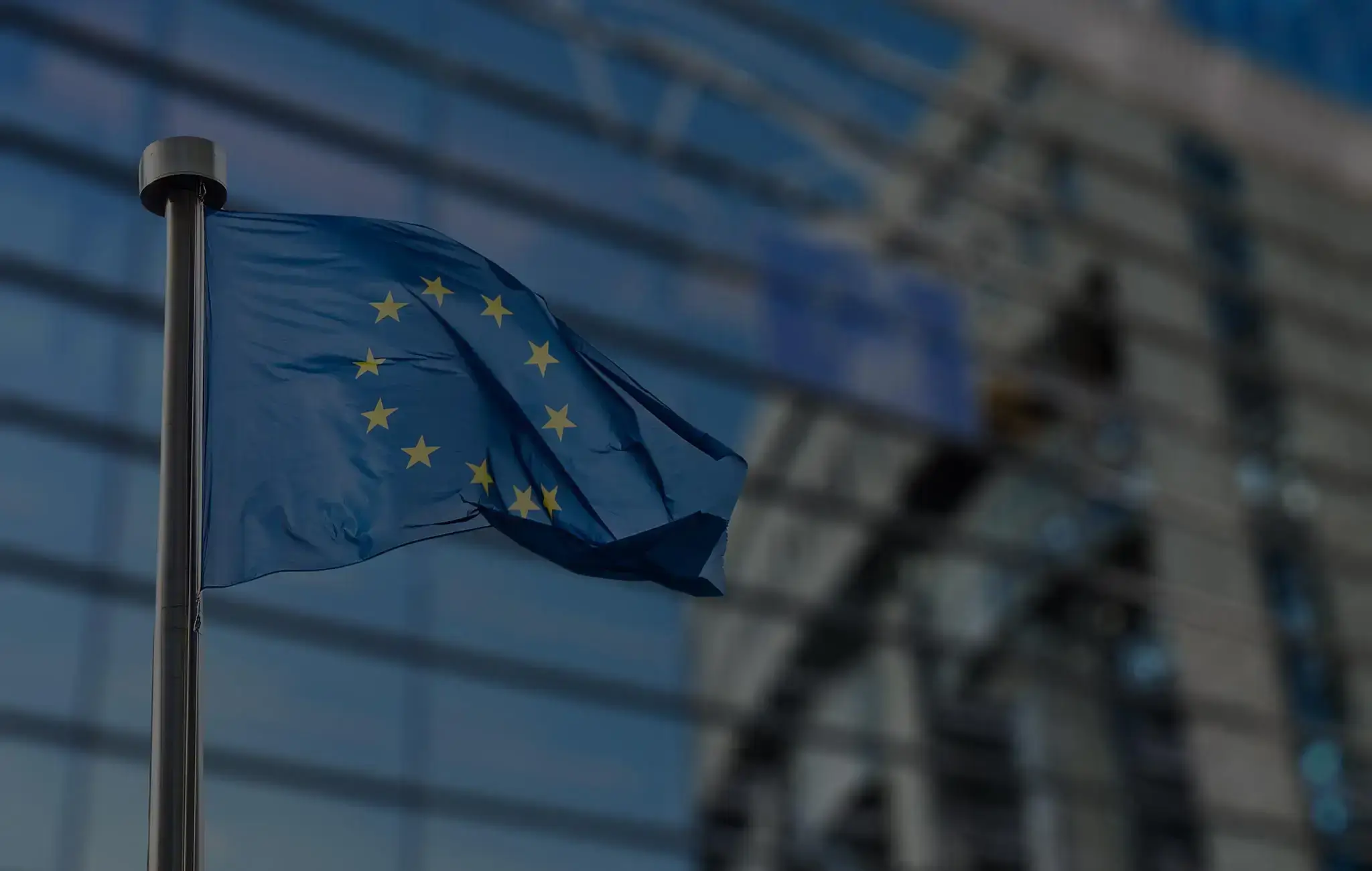What is the European Central Bank (ECB) Meeting?
The European Central Bank (ECB) meeting is known as the Governing Council’s monetary policy meeting and is held every six weeks. Decisions regarding monetary policies and interest rates are made at the meeting, and changes tend to have a major impact on the world’s most popular currency pair: the EURUSD, which is the Euro vs. USD exchange rate. Other Euro-dominated pairs such as EURGBP, and EURCAD, EURAUD, tend to see large price swings on the day of the ECB rate meeting.
For the ECB the main objective is to maintain stable prices (inflation) for the countries that use the Euro. Decisions made by the council are announced on the day of the meeting at 12.45 pm CET, this is done through a press release. Following this, there is a press conference on the day of the meeting, allowing the media to ask questions.
Where is the ECB Located?
| European Central Bank Location – The European Central Bank was founded in 1998 and is an official institution of the European Union. It is currently situated in Frankfurt am Main in Germany. |
When is the next ECB Interest Rate Meeting?
October 27, 2022
December 15, 2022
February 22, 2023
March 16, 2023
May 4, 2023
Why is the ECB important?
Traders and investors try to predict the outcome of the monetary policy meetings in order to position their portfolios or capitalise on short-term moves. If interest rates go up aggressively over shorter periods, traders can expect a ripple effect that decreases the value of stocks, bonds, and other securities. It tends, however, to increase the value of the Euro to other currencies.
On the other hand, lower interest rates could have the opposite effect.
To predict future monetary policies, traders examine the formation of the Governing Council, the distribution of voting rights between countries, and look at economic factors such as economic growth and inflation, and political decisions such as Brexit. Members of the governing council’s executive board make regular speeches and appearances at conferences where they can reveal some key thoughts on the current market and policy.
How does the ECB meeting affect financial markets?
The ECB meeting aims to set an inflation rate across the EU area of just under 2%. The meetings are highly significant for traders as it determines the official interest rates for the eurozone. Once the rates have been set, the national central banks (NCBs) are required by the ECB to use the rates for transactions with commercial banks.
There are key rates that are set, these include the minimum bid rate, the deposit rate, and the marginal lending rate.
The minimum bid rate is the rate set for one-week loans only.
Deposit rates are the rates paid on deposits that have been held with NCBs.
The marginal lending rate is only for overnight loans.
The Governing Council also could apply something called quantitative easing (QE) when it is required. QE involves putting money into the economy to boost and encourage spending. The policies set by the ECB influence the interest rates set by commercial banks and other lenders.
Therefore traders and investors are likely to be concerned about the impact the ECB policy will have on the demand for stocks and other securities. This may cause traders to change their strategies. It is common for traders to predict which way the monetary policy will be heading, before each meeting.
How does the ECB impact the forex market?
Traders look for either Hawkish or Dovish language to determine whether the ECB will increase or decrease the rates. They will look for clues in the language used by the chairman of the ECB, and other members, outside of the meetings, these clues can be referred to as ‘forward guidance’.
Hawkish
The term Hawkish is used if central bankers are talking about tightening monetary policy. The policy is tightened by increasing interest rates or even reducing the ECB’s bank’s balance sheet.
Central bankers tend to be hawkish if the economic outlook is positive and if inflation is expected to rise. If a central bank is hawkish it means that the economy and its financial products can stand strong in the free market and not come under selling pressure.
Dovish
If Central bankers are talking about reducing interest rates or even introducing quantitative easing (injecting money into the economy) then they are said to be dovish. Dovish members are said to support accommodative monetary policy, which means that they are buffering the economy from market forces.
European bonds are attractive if traders think that the ECB will commence an interest rate hiking cycle. The demand for those bonds then adds support for the euro currency. If traders believe that the ECB will support a dovish stance, then the euro will likely depreciate. The yield difference between two countries is called the interest rate yield differential.
Before the 2008 financial crisis, traders were heavily-involved in carry trades, where they borrowed very low-interest rate currencies like the Japanese yen to fund trades in higher-yielding currencies like the Australian dollar.
Why is the ECB independent?
The independence of the ECB is significant to maintain price stability. Central banks have tried to separate monetary policy from direct political influence, as they haven’t always been independent bodies. The danger with governments having control over central banks is that politicians may be tempted to force short-term decisions that are not beneficial in the long run.
A closer look at the ECB rate decisions
The way inflation is controlled by the Governing Council is by changing the key European interest rates.
The minimum bid rate: This is the rate the NCBs must charge for one-week loans. There are two names for this, the main refinancing rate or the ECB refi rate. Commercial banks use the minimum rate as it is the lowest rate on which they can borrow capital. The rate also has a significant influence on the interest rates charged by commercial banks to businesses and consumers.
Deposit Rate: This is the amount of interest paid on overnight deposits that are made with NCBs in the Eurosystem. If the deposit rate is increased this means that commercial banks will get a better return on money deposited with the NCBs.
Therefore, commercial banks can give fewer overnight loans to other commercial banks. If the deposit rate goes down, then banks will get a lower return than the amount they deposited with the NCBs. Commercial banks will then want to provide more overnight loans and deposit less money. The deposit rate is another way the Governing council controls the cash flow into the economy.
Marginal lending rate: This lending rate is the rate that NCBS must follow to charge commercial banks for overnight loans. These loans are used by banks to ensure that they have enough cash for clients, this is so that the loan will meet the bank’s reserve requirements for the day. Therefore, the ECB will set this rate higher than the minimum bid rate, this is seen as a penalty for banks that have to borrow emergency funds to meet their reserve requirements.
The penalty is greater when there is a wider gap between the marginal lending rate and the deposit rate. The gap can also be called the corridor. This affects the way conservative banks are with their capital and their willingness to provide loans to both commercial and retail clients.
What is the ECB’s asset purchasing programme?
The asset purchase program, also known as Quantitative Easing (QE), was first introduced in 2015. This was created during the Eurozone debt crisis as a method to stabilise the yields on government debts in countries such as Greece.
The ECB spent four years purchasing asset-backed securities, covered bonds, and government and corporate debt. This also benefited consumers as economic growth was lifted, which meant wages rose, borrowing costs lowered, and lending increased.
In 2018, the ECB confirmed that it would stop its bond-buying scheme to stimulate the economy. However, in 2020, the covid pandemic saw a return to central bank largesse with the Pandemic Emergency Purchasing Programme (PEPP).
Who are the Key Figures on the Governing Council?
There are 25 representatives on the Governing Council, but they don’t all have voting rights. Instead, 21 voting rights are shared between the representatives. The ECB’s executive board has a total of six members, with each having a vote at each meeting. The rest of the votes are split between two groups.
Group 1
This group is determined by the five countries with the largest economies. Four voting rights are shared and this is rotated every month between countries.
Group 2
This group consists of the remaining 14 countries. There are 11 voting rights distributed amongst the group and this also rotates every month.
The Current executive board of the governing council:
 Christine LagardePresident of the ECB |  Luis de GuindosVice-president of the ECB |  Frank EldersonMember of the Executive Board of the ECB |
 Philip R. LaneMember of the Executive Board of the ECB |  Fabio PanettaMember of the Executive Board of the ECB |  Isabel SchnabelMember of the Executive Board of the ECB |
European Central Bank History
Before the establishment of the ECB, the European Monetary Institute was responsible for issues regarding states adopting the euro. The EMI was part of the second stage of the EU’s Economic and Monetary Union (EMU). Then the ECB formally replaced the EMI on 1 June 1998, but could not exercise all of its powers until the Euro was introduced on 1 January 1999.
The very first president of the ECB was Wim Duisenberg, who was the former president of the Dutch central bank and the European Monetary Institute. However, Dusienberg was not welcomed by the French government and argued that the ECB should have a French president, seeing as the location was set to be in Germany. There were also rising tensions with the executive board, the United Kingdom wanted a place even though it had not joined the single currency.


